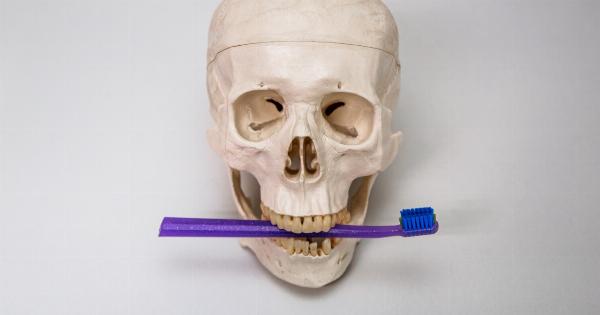It is a well-known fact that sleep is essential for optimal health and well-being. However, many people ignore the importance of getting enough quality sleep, which can lead to a variety of health problems.
One such problem is osteoporosis, a condition that causes the bones to become weak and brittle. While osteoporosis is more commonly associated with women, studies have shown that lack of sleep can also lead to osteoporosis in men. In this article, we will explore the relationship between lack of sleep and osteoporosis in men.
What is Osteoporosis?
Osteoporosis is a condition that causes the bones to become weak and brittle, which increases the risk of fractures. This happens when the body loses too much bone mass, makes too little bone, or both.
It is often called the “silent disease” because there are no symptoms until a bone breaks. Osteoporosis is more common in women, but men can also develop the condition.
How Lack of Sleep Affects Bone Health
Sleep plays an essential role in bone growth and development. During sleep, the body repairs and regenerates bone tissue. Lack of sleep can disrupt this process and lead to a decrease in bone density.
Studies have shown that a lack of sleep can alter the balance of hormones responsible for bone growth and remodeling.
In particular, low levels of growth hormone and high levels of cortisol, which are associated with sleep deprivation, can contribute to bone loss.
Additionally, a lack of sleep can lead to an increase in inflammation, which is also linked to bone loss.
Inflammatory markers such as interleukin-6 (IL-6) and C-reactive protein (CRP) have been associated with decreased bone density and an increased risk of fractures.
How Lack of Sleep Leads to Osteoporosis in Men
While there are several factors that contribute to osteoporosis, studies have shown that lack of sleep can be a risk factor, especially in men.
A study published in the Journal of Bone and Mineral Research found that men who slept less than 5 hours a night had a significantly greater risk of osteoporosis than those who slept more than 6 hours a night.
The study also found that men who reported poor sleep quality had a greater risk of osteoporosis, regardless of how long they slept.
Another study published in the Journal of Clinical Endocrinology and Metabolism found that men who slept less than 6 hours a night had lower bone mineral density (BMD) compared to men who slept more than 6 hours a night.
The study also found that men who reported poor sleep quality had lower BMD compared to men who reported good sleep quality.
Other Factors That Contribute to Osteoporosis in Men
While lack of sleep is a significant risk factor for osteoporosis in men, there are other factors that contribute to the condition as well:.
- Age: As men age, their risk of osteoporosis increases.
- Hormones: Low levels of testosterone can contribute to bone loss in men.
- Smoking: Smoking has been linked to decreased bone density and an increased risk of fractures.
- Alcohol consumption: Heavy alcohol consumption can lead to decreased bone density and an increased risk of fractures.
- Inactivity: Lack of exercise can lead to decreased bone density and an increased risk of fractures.
Prevention and Treatment
Prevention is key when it comes to osteoporosis.
To reduce the risk of osteoporosis in men, it is essential to get enough sleep, exercise regularly, quit smoking, limit alcohol consumption, and eat a healthy, balanced diet rich in calcium and vitamin D.
If osteoporosis has already developed, there are several treatment options available. Medications such as bisphosphonates, hormone therapy, and denosumab can help slow or stop bone loss and reduce the risk of fractures.
Lifestyle changes such as exercise, a healthy diet, and fall prevention strategies can also help manage osteoporosis.
Conclusion
Lack of sleep can have significant effects on bone health, including contributing to the development of osteoporosis in men.
It is important for men to prioritize getting enough sleep and practicing healthy lifestyle habits to reduce their risk of developing the condition.






























